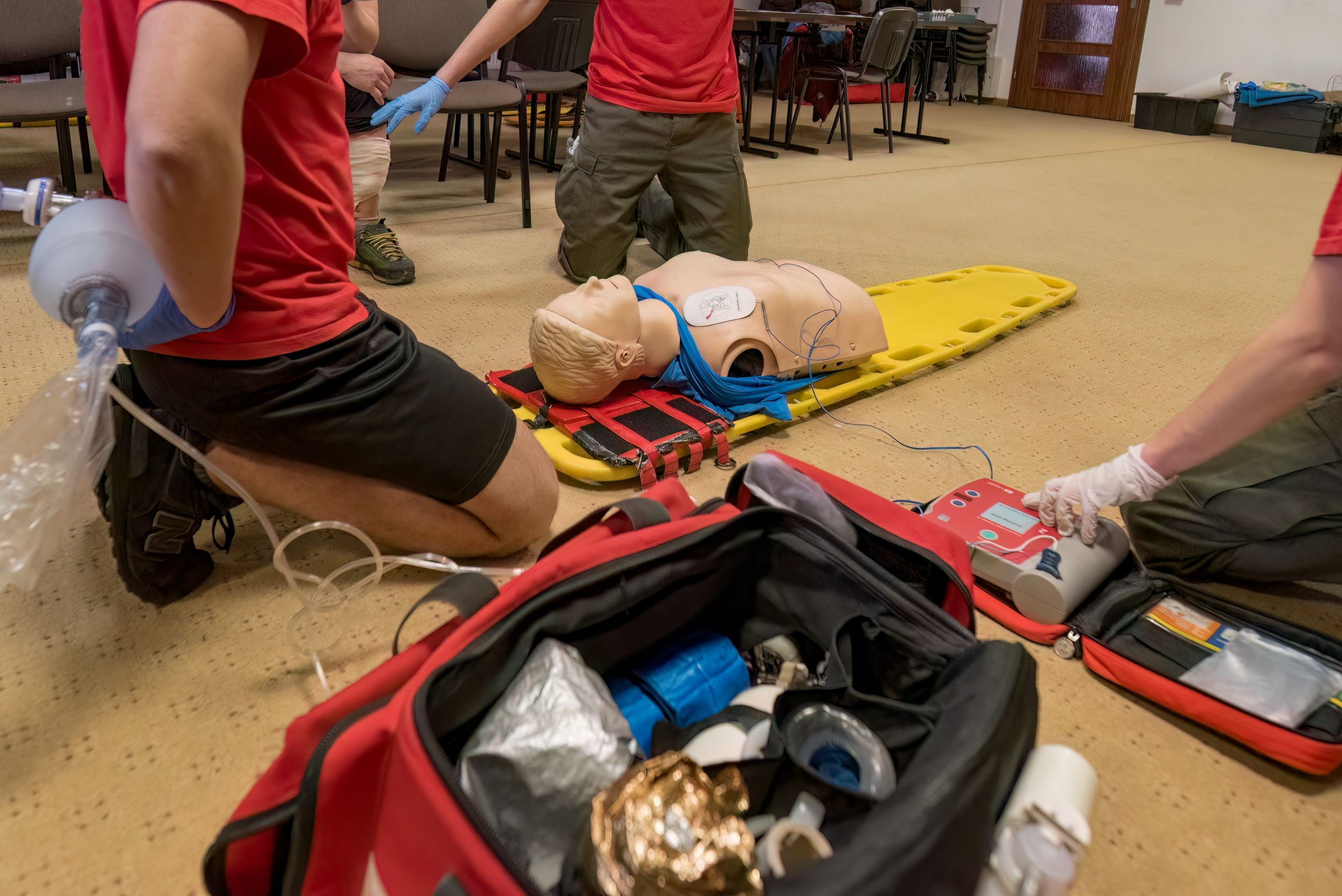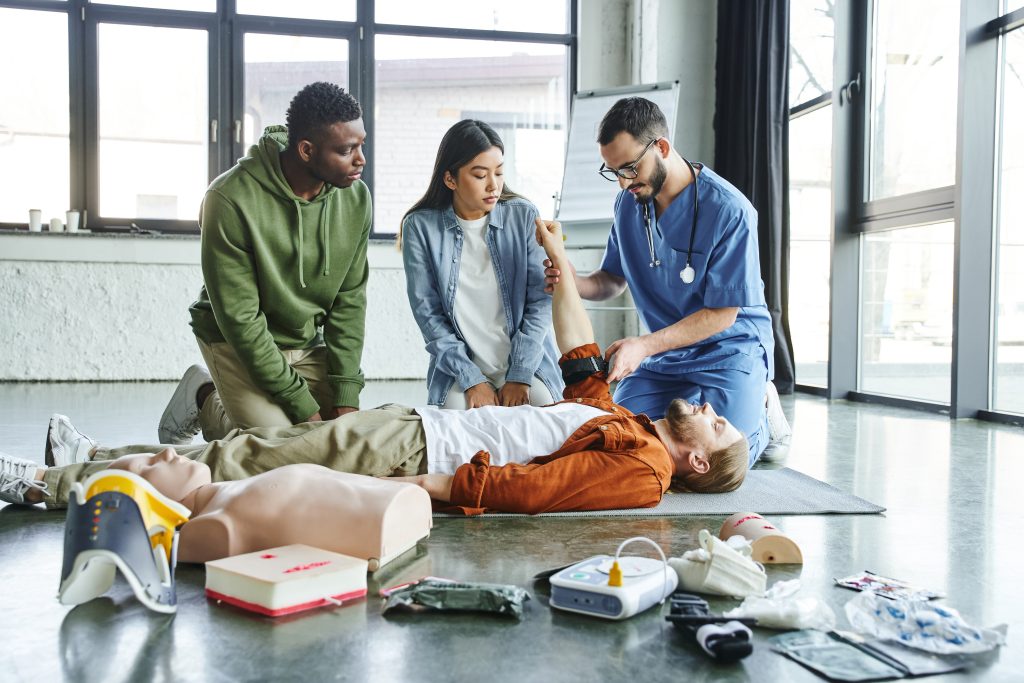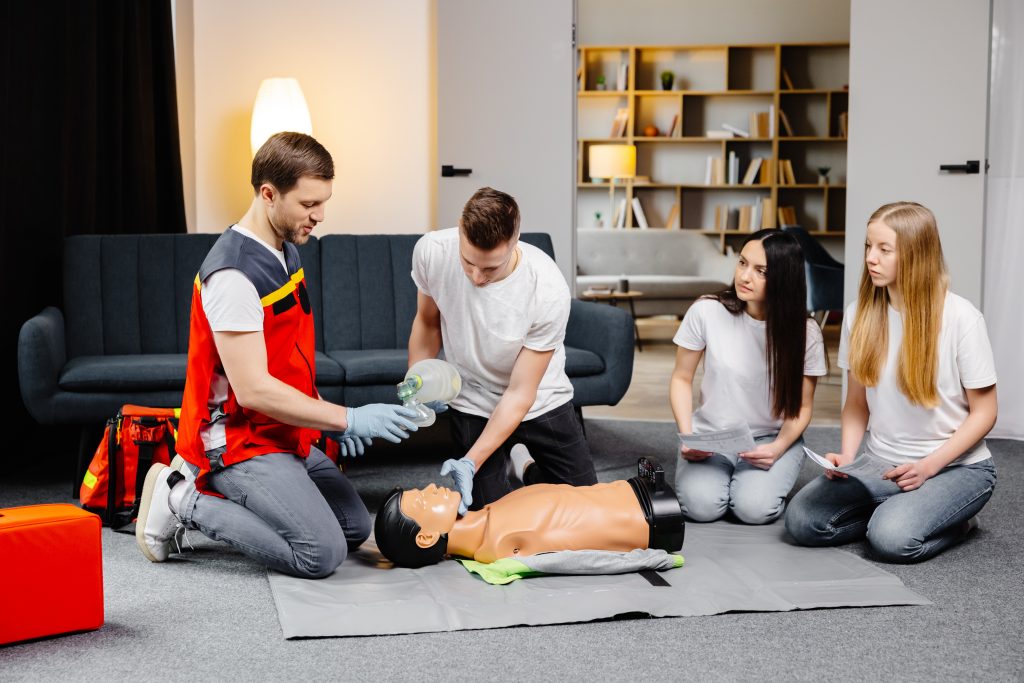
In the fast-paced, high-energy environment of Washington, D.C., every second can matter. Whether you are navigating the bustling streets, working in a government office, or simply enjoying the city’s many cultural attractions, an emergency can strike at any time. The ability to act decisively and confidently in a crisis is a skill that transcends any profession or lifestyle. This is where CPR and First Aid certification come in.
Earning your certification is more than just a credential. It is about gaining the knowledge and confidence to make a tangible difference when it counts the most. This comprehensive guide will walk you through everything you need to know about getting certified in the nation’s capital. From understanding the importance of these skills to navigating the certification process, we’ve got you covered.
The Power of Being Prepared: Why Certification Matters
Imagine a scenario where a colleague at work collapses, a child at the park starts choking, or a family member suffers a sudden medical episode. In these moments of panic and chaos, a certified individual becomes a beacon of calm. They can provide immediate, life-sustaining care until professional help arrives. This critical intervention, often called the “golden minute,” can significantly improve the outcome for the person in distress.
CPR, or Cardiopulmonary Resuscitation, is a technique used when someone’s breathing or heart stops. It involves a combination of chest compressions and rescue breaths to keep blood and oxygen flowing to the brain and other vital organs. First Aid, on the other hand, is a broader set of skills. It provides immediate care for a wide range of injuries and illnesses, including burns, cuts, sprains, allergic reactions, and more. Together, these two disciplines form a powerful toolkit for emergency response.
In a city as dynamic as Washington, D.C., the need for trained individuals is especially high. From government buildings and museums to schools and public transport, emergencies can occur anywhere. Having certified individuals in key locations throughout the city can create a safer, more resilient community.

Who Should Get Certified?
The short answer is: everyone. While some professions legally require CPR and First Aid certification, the benefits extend to all members of the community.
- Healthcare Professionals: Doctors, nurses, paramedics, and medical assistants often require specific, advanced certifications like BLS (Basic Life Support) as a condition of their employment.
- Educators and Childcare Providers: Teachers, coaches, and daycare workers need to be prepared for medical emergencies involving children, from minor injuries to life-threatening events.
- Fitness Professionals: Personal trainers, gym instructors, and coaches should be certified to respond to cardiac events or injuries during physical activity.
- Corporate and Office Workers: A certified co-worker can be the first line of defense in an office emergency, bridging the gap until paramedics arrive.
- Parents and Caregivers: Knowing CPR and First Aid for infants and children is an invaluable skill for any parent, guardian, or babysitter.
- Community Members: Anyone who wants to be a responsible and prepared citizen should consider getting certified. You never know when you might be called upon to help a stranger or a loved one.
Navigating the Certification Process in D.C.
Getting certified is a straightforward process, but it is essential to choose the right path for your needs. The process typically involves three key steps:
- Choosing a Course: There are various types of courses available, each tailored to a specific audience. Some focus on adult CPR, while others include infant and child CPR. Many providers offer combined CPR and First Aid courses. You can also find specialized courses for healthcare providers or childcare professionals.
- Completing the Training: Training can be conducted in a traditional classroom setting, entirely online, or through a blended approach. Blended courses combine online theoretical learning with an in-person, hands-on skills session. This format is popular because it offers flexibility while still ensuring you master the physical techniques.
- Passing the Exam: After completing the training, you will need to pass a written and/or practical exam to demonstrate your proficiency. Upon successful completion, you will receive your certification card, which is valid for a set period, typically two years.
In-Person vs. Blended Learning: Which is Right for You?
The choice between an in-person and a blended course depends on your learning style and schedule.
- In-Person Courses: These are the traditional format where an instructor guides you through the curriculum in a classroom setting. This method provides direct, real-time feedback and ample opportunity to practice hands-on skills with an instructor’s supervision. It’s a great option for those who prefer a structured environment and immediate interaction.
- Blended Learning Courses: This modern approach allows you to complete the lecture portion of the course online at your own pace. You can study the material from the comfort of your home or office. Once the online portion is finished, you schedule a short, in-person skills session to practice and demonstrate your CPR and First Aid techniques. This model is ideal for busy individuals in D.C. who need flexibility.
Regardless of the format you choose, the most critical part of the process is the hands-on skills practice. You need to physically perform chest compressions, administer rescue breaths, and practice using an AED (Automated External Defibrillator) to build the muscle memory necessary for a real emergency.

What to Expect in a CPR and First Aid Class
A comprehensive course will cover a range of essential topics.
- CPR: You will learn how to recognize the signs of a cardiac emergency, how to perform chest compressions and rescue breaths for adults, children, and infants, and how to use an AED. The training will emphasize the importance of calling emergency services and the “Chain of Survival.”
- First Aid: The First Aid portion will teach you how to assess a scene for safety, how to check a conscious or unconscious person, and how to treat common injuries. Topics typically include how to control bleeding, treat burns, manage sprains and fractures, and respond to choking incidents.
- Using an AED: You will receive training on the proper use of an Automated External Defibrillator. AEDs are a vital component of the emergency response toolkit. They are designed to deliver an electrical shock to the heart to restore a normal rhythm. Learning how to use one can be a life-saving skill.
The instructors are experts in their field. They are often first responders, nurses, or paramedics who can share real-world experiences and insights. They will guide you through the practical exercises, providing constructive feedback to ensure you gain the confidence to act when a real emergency occurs.
Maintaining Your Certification
Once you are certified, your card will have an expiration date, typically two years from the date of issue. To keep your skills sharp and your certification current, you must renew it before it expires. The renewal process is similar to the initial certification, often involving a shortened course or a quick skills check.
Staying up-to-date with your training is crucial. Emergency medical guidelines can change, and a refresher course ensures you are following the most current protocols. Many D.C. employers require their staff to maintain valid certifications, making renewal a necessary part of professional development.
Conclusion: Be a Hero in the Nation’s Capital
Washington, D.C. is a city of influence and action. By getting your CPR and First Aid certification, you are taking a powerful step toward being a positive force in your community. You are not just learning a skill; you are joining a network of prepared citizens who can make a difference in a critical moment. You can be the calm in the chaos, the one who knows what to do, and the first link in the chain of survival.
Don’t wait for an emergency to realize you need these skills. Take control of your preparedness today. Find a reputable training provider and sign up for a class. Your future self, a colleague, a loved one, or even a stranger will thank you for it.
Ready to make a difference? Contact CPR Classes Near Me to get started on your certification journey today.
FAQs about CPR & First Aid Certifications in Washington D.C.
What is CPR?
CPR, or Cardiopulmonary Resuscitation, is a life-saving technique used in medical emergencies when someone’s breathing or heartbeat has stopped. It involves a combination of chest compressions and rescue breaths to manually circulate blood and oxygen to the brain and other vital organs until professional medical help arrives. The goal is to keep the person alive and minimize damage to the brain.
What is First Aid?
First Aid is the immediate care given to an injured or ill person before a professional medical provider can take over. It covers a wide range of common injuries and medical conditions, including but not limited to, cuts, burns, sprains, fractures, choking, heatstroke, and allergic reactions. The primary purpose of First Aid is to preserve life, prevent the condition from worsening, and promote recovery.
How long is a CPR and First Aid certification valid?
CPR and First Aid certifications are typically valid for two years. This two-year period ensures that certified individuals receive regular refresher training to keep their skills sharp and stay updated on the latest emergency medical guidelines and techniques. It is crucial to renew your certification before it expires to maintain your credentials and readiness.
Can I get CPR and First Aid certified online in Washington, D.C.?
Yes, you can begin the certification process with an online component. Many providers offer “blended learning” courses, which combine online, self-paced learning with a hands-on, in-person skills session. This blended format allows you to complete the theoretical portion of the course conveniently online and then schedule a short, in-person session to practice and demonstrate your physical skills, which is a mandatory part of earning a valid certification.
Why is it important to get certified in Washington, D.C.?
Washington, D.C. is a highly populated and fast-paced urban center with a dense concentration of businesses, government offices, schools, and public spaces. The high volume of people means that the likelihood of an emergency occurring is greater. Being certified in CPR and First Aid equips you with the skills to respond effectively and provide immediate assistance to a person in distress, potentially saving a life while waiting for emergency services to arrive. It contributes to building a safer and more resilient community.

Leave a Reply